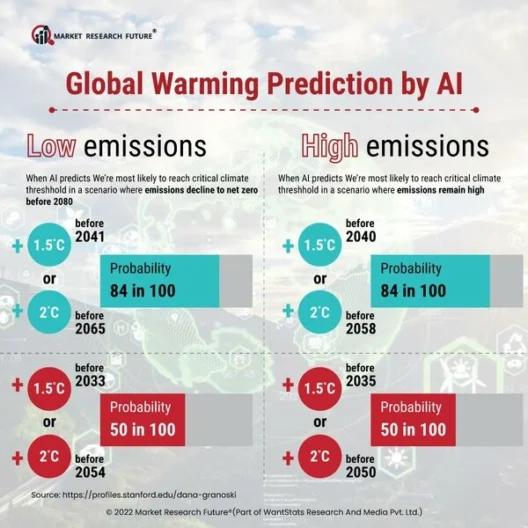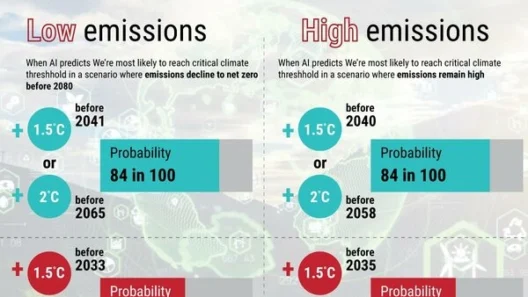In the modern era, the planet’s environmental equilibrium is undeniably experiencing tumultuous change. Globally, ecosystems are succumbing to the pervasive reach of climate perturbation, a manifestation of anthropogenic forces specifically tied to greenhouse gas emissions. This elucidation aims to dissect the multifaceted ramifications of global warming, resting on a foundation that encompasses Earth’s systems: the atmosphere, hydrosphere, lithosphere, and biosphere.
To commence, let us delve into the atmosphere, which functions as the protective blanket enveloping our planet. The greenhouse effect, an essential natural phenomenon, traps solar energy within the atmosphere, maintaining warmth conducive to life. However, the exponential uptick in carbon dioxide levels—primarily from the burning of fossil fuels—has intensified this effect to perilous extents. This exacerbates a cycle of warming which leads to more volatile weather patterns. The ramifications of these atmospheric changes are twofold: rising temperatures and alterations in precipitation patterns.
One might observe that not only are regions experiencing unprecedented heatwaves but also increased occurrences of extreme weather events. For instance, hurricanes and typhoons are inflicting harrowing damage with augmented intensity, as warmer oceans serve as fuel for these fierce storms. Simultaneously, droughts are taking a toll on agriculture, pushing several regions into dire food insecurity. The interplay of atmospheric changes thus not only distorts natural weather patterns but also poses existential threats to human habitation.
Transitioning from the atmosphere, we must confront the hydrosphere, which includes all water bodies on Earth. Climate change is fundamentally altering the hydrological cycle, leading to erratic patterns of water distribution. Glaciers and polar ice caps are receding, contributing to rising sea levels that threaten coastal communities worldwide. Expectedly, such drastic shifts imperil both freshwater supplies and marine ecosystems. The salinization of estuaries and aquifers reflects limited freshwater availability, amplifying competition for this precious resource amid rising populations.
The implications of hydrospheric alterations extend even further. Ocean acidification, a byproduct of increased CO2 absorption by seawaters, is wreaking havoc on calcareous organisms, disrupting marine food webs. Coral reefs, often referred to as the “rainforests of the sea,” are succumbing to bleaching, resulting in biodiversity loss and the degradation of crucial marine habitats. The precipitating crises within the hydrosphere elucidate a deeper narrative of interconnectedness; as one system falters, it catalyzes a domino effect throughout the wider global ecosystem.
The lithosphere—Earth’s solid outer layer—is not immune to the perturbations wrought by climate change. The emergence of permafrost thawing in Arctic regions serves as a poignant indicator of warming trends. As this frozen ground melts, it releases significant quantities of methane, an even more potent greenhouse gas than carbon dioxide. This feedback loop magnifies warm atmospheric conditions, further exacerbating climatic fluctuations. Land subsidence and erosion, coupled with loss of fertile topsoil due to increased rainfall and flooding, underscore the geological ramifications of global warming.
Biodiversity, intrinsically linked to the biosphere, is continuing to diminish in the face of these multifarious changes. Habitats are undergoing transformation, and species unable to adapt are facing extinction. The International Union for Conservation of Nature (IUCN) has reported alarming statistics on species at risk, indicating that nearly 1 million species are threatened by the relentless pace of climate change, habitat loss, and pollution. This loss of biodiversity compromises ecosystem integrity and functionality, leading to diminished resilience amidst environmental stressors.
In an era characterized by rapid change, the interconnections between these global systems accentuate a sobering truth: actions within one sphere resonate across others. For instance, deforestation not only diminishes carbon sequestration potential but also disrupts local hydrological cycles. Such intricate relationships compound the urgency of addressing climate change comprehensively. It invites a paradigm shift towards sustainable practices that harmonize human activity with the natural world’s rhythms.
Moreover, the socio-economic implications of global warming require equal attention. Vulnerable populations, particularly in developing nations, bear the brunt of climatic impacts despite contributing minimally to greenhouse gas emissions. The phenomenon of environmental injustice surfaces, presenting a moral dilemma where the most disadvantaged communities face catastrophic repercussions. Addressing global warming through equitable solutions is crucial; adaptation strategies and sustainable development must center on inclusivity and resilience, ensuring that all stakeholders have a voice.
In conclusion, the specter of global warming casts a long shadow over Earth’s multifarious systems. Understanding the complexity of atmospheric, hydrospheric, lithospheric, and biospheric interactions is fundamental in predicting future conditions and guiding remedial efforts. Global warming’s pervasive reach marks a clarion call not solely for individual action but for collaborative global responses. Collectively, humanity must forge sustainable pathways to mitigate attendant challenges, preserving Earth’s delicate balance for generations to come. Only through concerted action can we hope to navigate the formidable turbulence ushered in by climate change and secure a viable future for our planet.








